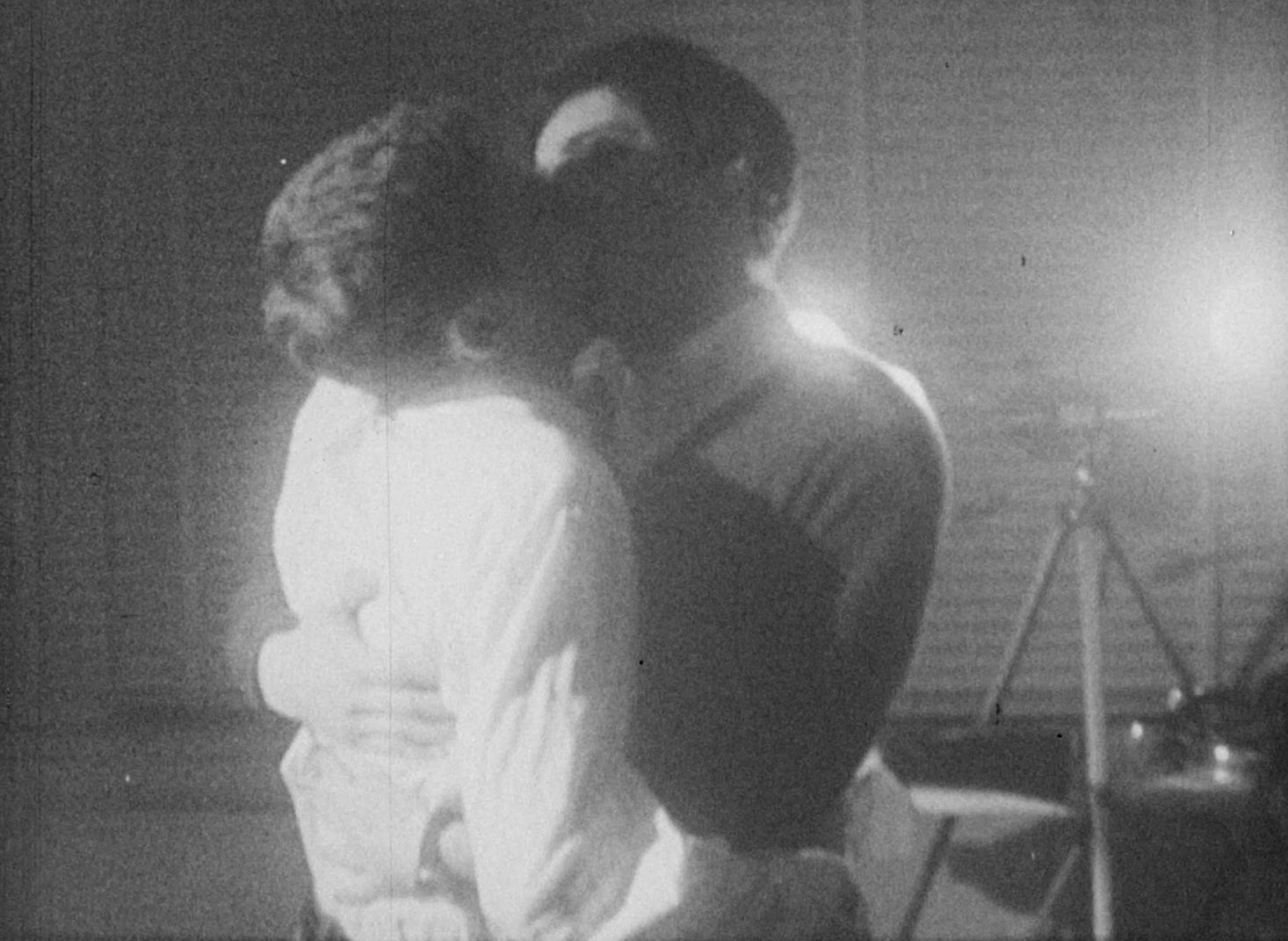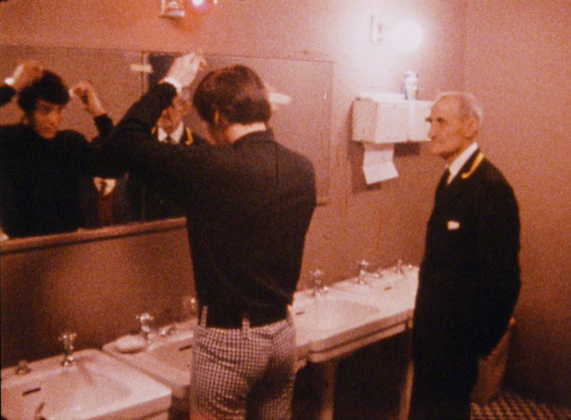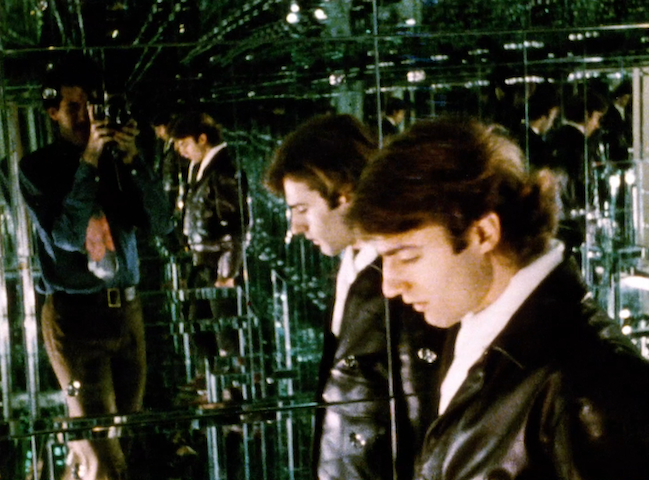INTRODUCING STREAMLINE, A NEW GME FEATURE FOR DIGITAL SITE LICENSING, CURRENTLY INCLUDING FREE STREAMING OF THE EARLY FILMS OF WARREN SONBERT
/Scenes from Warren Sonbert's early films WHERE DID OUR LOVE GO?, HALL OF MIRRORS, and AMPHETAMINE, all completed and released in 1966.
GME Streamline is a new section on Gartenberg Media's website for the distribution of films and videos that we are making available as Digital Site Licenses (DSL) to the North American academic community, in addition to the occasional presentation of viewable streams on Streamline's title pages (see The Warren Sonbert Collection).
The Estate of Warren Sonbert has previously named GME as the custodian of the legacy of experimental filmmaker Warren Sonbert (1947-1995). Since his untimely passing, GME has worked on an extensive project to preserve, distribute and curate career retrospectives of his films on an international basis, as well as publish original documents from the paper archive of his writings, which are now housed at Harvard University.
Warren Sonbert was one of the seminal figures working in American experimental film. He started making films in 1966 while a student at New York University, and before he was 20 years old, his first career retrospective drew the attention of the film critic for the commercial trade journal Variety, who wrote that “Probably not since Andy Warhol’s THE CHELSEA GIRLS had its first showing at the Cinematheque... almost a year and a half ago has an ‘underground’ film event caused as much curiosity and interest in N.Y.’s non-underground world as did four days of showings of the complete films of Warren Sonbert at the Cinematheque’s new location on Wooster St.”
Sonbert’s earliest films, in which he captured the spirit of his generation, were inspired first by the university milieu and then by the denizens of the Warhol art scene, including superstars Rene Ricard and Gerard Malanga. In these loosely structured narratives, Sonbert boldly experimented with the relationship between filmmaker and protagonists through extensively choreographed hand-held camera movements within each shot. The mood of these films was further modulated by chiaroscuro effects, achieved primarily through natural lighting (in both indoor and outdoor shots), combined with variations in the raw film stock and the exposure and the use of rock-and-roll music on the soundtrack.
For the first time ever, we are pleased to announce the release in digital format of Sonbert’s first three films, all from 1966: AMPHETAMINE, WHERE DID OUR LOVE GO?, and HALL OF MIRRORS. These 3 titles are available for free streaming on GME’s website over the course of this holiday season (until January 10, 2020), at which time they will then be made available as Digital Site Licenses for purchase by our university clientele. For exhibition rental of these three movies (and other Sonbert films), please contact Light Cone, the international distributor of Sonbert’s moving image work. Over the course of 2021, GME will continue to release additional digital versions of Sonbert’s filmmaking oeuvre.
◊
In 1966, while still in his teens, Sonbert wrote an essay, “Alfred Hitchcock, Master of Morality” for Film Culture magazine. The publication appeared in the same year as the production of his first film, AMPHETAMINE (1966). In his article, Sonbert considered VERTIGO (1958) to be “Hitchcock’s greatest and one of the best films ever made”. He was so entranced by that film that he inscribed homages to VERTIGO in his very first movie.
According to critic and professor Chen Sheinberg, “The film focuses on a party of drugs and sex – young men with a deadpan expression injecting amphetamines. Sonbert shows it in a very detailed and meticulous way that makes the viewer almost feel the pain physically, while the joyful pop music creates a counterpoint that adds a playful aspects to these scenes. In this film, Sonbert pays tribute to VERTIGO (1958) [which he had first seen at the Bleecker Street Cinema in New York (see WHERE DID OUR LOVE GO?)] -- with its spiral and circular motifs. The film begins with a woman’s portrait (framed inside a circle) like the portrait of Carlotta at which Madeleine (Kim Novak) gazes in the museum scene. The music and the structure of AMPHETAMINE are also repetitive, and in one scene the camera moves in a circle around two men embracing, similar to the famous kissing scene between James Stewart and Kim Novak in Hitchcock’s VERTIGO. It’s an homage, but Sonbert subverts gender conventions, showing a homosexual kiss, three years before the Stonewall riots. If Madeleine represents Scottie’s obsessive fantasy world, the party in Sonbert’s film reflects the fantasies and desires of a decade later, the 1960s era -- with its forbidden paradise.”
◊
WHERE DID OUR LOVE GO? is an homage to the artistic and social milieu of New York City in the 1960s, as portrayed by the youthful protagonists in the film. Sonbert chronicles his friends and colleagues at the Janis and Castelli galleries, MOMA, Warhol’s Factory, the Bleecker Street Cinema, a rock concert, shopping, dancing, partying, and simply hanging out. These group activities have a contemporary and poignant relevance (cf. HALL OF MIRRORS), since WHERE DID OUR LOVE GO? represents a way of life – clusters of friends – before social distancing was necessitated by Covid-19.
By the time he was fifteen years old, Sonbert was regularly attending screenings at the Bleecker Street Cinema and in 1964 (at age 17!) Sonbert became Editor-in-Chief of the special issue of the NY Film Bulletin on Jean-Luc Godard. Further underscoring Sonbert’s precocious understanding of cinematic form and structure, he interviewed Godard for this issue.
Writing in the Los Angeles Free Press in 1968, Gene Youngblood reflected on the importance of Sonbert’s WHERE DID OUR LOVE GO? in relation to Jean-Luc Godard’s CONTEMPT (1963):
“One day several weeks ago my office mail included a photo of Brigitte Bardot in CONTEMPT, which appears in Warren Sonbert’s WHERE DID OUR LOVE GO?. I’m very interested in this matter because both Jonas Mekas and James Stoller in the Village Voice proclaim Sonbert as a genius. Mekas speaks of Sonbert creating a new narrative form which, he said, surpasses Godard. New York critics have nothing but praise for this young filmmaker (20 years old), who seems to be dealing with some new form of nostalgia or sentiment exclusively 60’s oriented. Writing of WHERE DID OUR LOVE GO?, Mekas emphasized its multidimensional moods…If WHERE DID OUR LOVE GO? includes a reference to CONTEMPT, it’s a film I definitely want to see: I’ve long felt that CONTEMPT is perhaps a pioneer work of New Nostalgia. For me at least CONTEMPT and L’ECLISSE [1962, Michelangelo Antonioni] are ultimate statements on early 1960s nostalgia and sentiment, a kind of post-existentialist romanticism. From what I hear, Warren Sonbert could be the artist to take up where Godard and Antonioni have left off, moving away from a cinema of emotions toward a cinema of ideas.”
◊
“This film is an outgrowth of one of Sonbert’s film classes at NYU. It was taught by Carl Lerner, the editor of (among other films) ON THE BOWERY (1956), 12 ANGRY MEN (1957), COME BACK AFRICA (1959), and REQUIEM FOR A HEAVYWEIGHT (1962). Sonbert was provided with outtakes from a Hollywood film photographed by Hal Mohr to re-edit into a narrative sequence.
“During the mid-1960’s, Sonbert was one of the denizens of Andy Warhol’s universe (as made evident by a sequence he filmed inside of The Factory, which appears in WHERE DID OUR LOVE GO?, 1966). Adding to this found footage that opens the beginning of HALL OF MIRRORS, Sonbert included scenes he shot of Warhol’s superstars Rene Ricard and Gerard Malanga in more private and reflective moments.
“In brilliant and deft fashion, Sonbert’s created a circular structure to his movie, beginning with actress Florence Eldridge trapped in a fun house hall of mirrors from the film AN ACT OF MURDER (1948), and ending with Gerard Malanga caught in the reflective web of artist Lucas Samaras’s 1966 sculpture “Mirrored Room.” Samaras wrote that ‘Being imbedded in this huge crystalline structure that has no top, bottom, or sides, this feeling of suspension, this feeling of polite claustrophobia or acrophobia, this feeling of fakery or loneliness seems complex, associatively enveloping and valid to me as a work of art, wonder, sensuality, pessimistic theory, and partial invisibility.’ Sonbert’s HALL OF MIRRORS is an especially poignant film in this era of Covid-19, as it expresses in emblematic fashion the sadness, anxiety and disorientation caused by solitude as a result of social distancing.”
- Jon Gartenberg
Warren Sonbert








